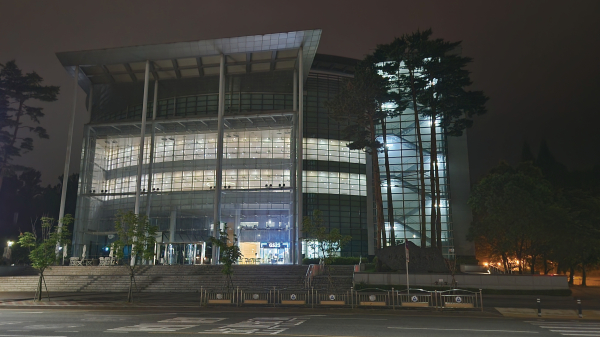
As spring fades and the temperature starts to rise, people seek refuge in the cool air of lecture halls and dorms. Lights, air conditioning, and electronic devices stay on late into the night in labs. The POSTECH campus consumes a significant amount of electricity, heating, and water daily. With summer just around the corner and air conditioners soon running at full blast, it is worth asking how much energy the campus uses.
Behind the everyday life of going back and forth between lecture halls and dorms, a staggering amount of energy consumption supports the campus. According to Facilities Management, the university used approximately 40.6 million kWh of electricity in 2024, costing over 5.7 billion KRW. When counting independent entities such as the POSTECH Biotech Center (PBC) and Bio Open Innovation Center (BOIC), the number climbs to nearly 77 million kWh. Adding the Pohang Accelerator Laboratory pushes the total usage to 181 million kWh, costing more than 25 billion KRW. For comparison, according to the Korea Electric Power Corporation average monthly household electricity consumption in Pohang is approximately 226.29 kWh.
Certain buildings consume significantly more than others. The Tae-Joon Park Digital Library ranks at the top in electricity consumption due to its data servers and supercomputers, using over 9.2 million kWh annually. Gas is heavily used at the BOIC for heating and cooling, while dormitories top the list for water and sewage use. Also, energy usage varies highly by season. Electricity demand spikes in summer, up to 40% higher than in spring and fall, while winter sees a small increase of about 5-10%.
One of the biggest challenges facing the campus is the lack of real-time energy monitoring. While usage is measured monthly via automatic meters, the university does not yet have systems to track consumption in real time. This makes it harder to detect the usage at specific times and locations. Another issue comes from the aging facility. Outdated equipment and buildings lead to lower energy efficiency and higher costs. The Facilities Management mentioned that upgrading to high-efficiency systems could save up to 10% on electricity annually. Hence, the university is incorporating equipment of higher efficiency during facility renovations over the next few years, replacing outdated systems to promote more environmentally-friendly operations.
Until last year, the university allocated a set annual budget to carry out energy-saving projects and related campaigns to conserve energy. One major achievement was replacing all indoor lighting fixtures on campus with high-efficiency LED lights. In addition, departments with outstanding energy-saving performance were recognized and rewarded with incentives. The Future City Open Innovation Center (FOIC) also contributed by organizing an energy conservation program that encouraged students and staff to propose their energy-saving ideas, with top contributions receiving awards.
Despite all these efforts, energy conservation cannot be achieved solely by an idea. Managing campus energy use goes beyond simply cutting costs or meeting consumption targets. As the Facilities Management team emphasizes, one-time projects or limited-budget fixes cannot make a lasting impact. What truly matters is building a shared sense of responsibility among all campus members – students, faculty, and staff alike. Energy conservation should be part of a broader cultural shift toward sustainability, not just for immediate benefit but for the well-being of future generations. In that sense, reducing energy use must be considered a collective effort, part of a more meaningful transformation of campus values.


